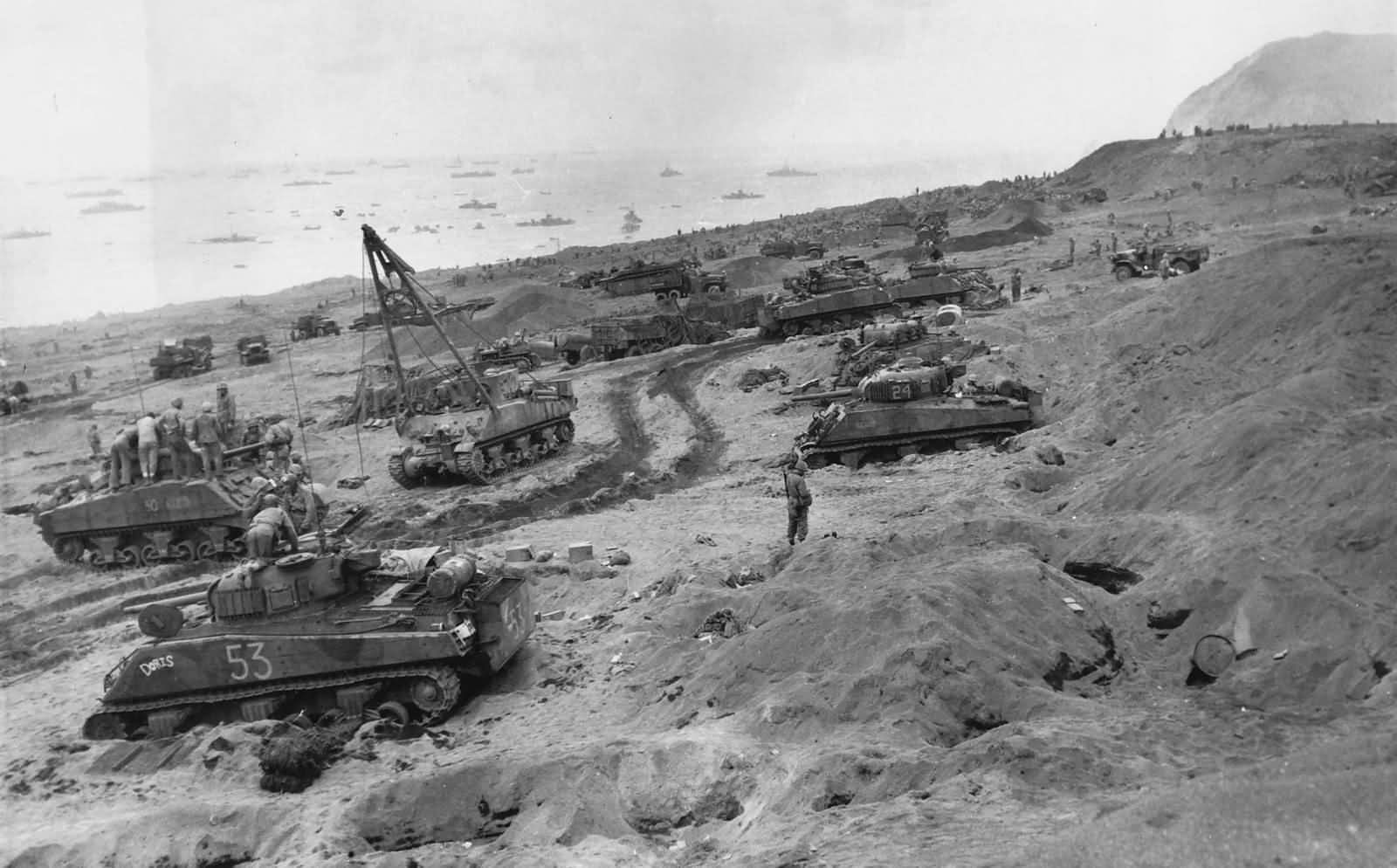The 4th Tank Battalion implemented a vigorous program to upgrade its tanks with appliqué armor and other enhancements prior to the Iwo Jima landings. This effort was informed by the battalion’s combat experiences during the Marianas Campaign, which highlighted the need for additional protection and improvements. However, the precise configuration of this armor appliqué and the subsequent camouflage and markings varied between the battalion’s three companies.
Company A had the most intricate camouflage scheme. Their tanks featured a combination of sand, black, olive drab, and dull green splotches painted on the wooden side armor, which sometimes extended to the turret as well. The markings were simple, consisting of the tank name, which always began with the company letter, the tank number, and the UNIS symbol.
Company B also employed elaborate camouflage patterns on their wooden appliqué armor, but with different colors and patterns compared to Company A. The precise colors and design varied within the company, reflecting a distinct approach to camouflage based on available resources and tactical needs.
Company C, in contrast, opted for a more straightforward approach. Their tanks were often painted over in olive drab or dull green, depending on what paint was available at the time. This gave their tanks a more uniform and subdued appearance compared to the other companies, with less emphasis on elaborate patterns.
